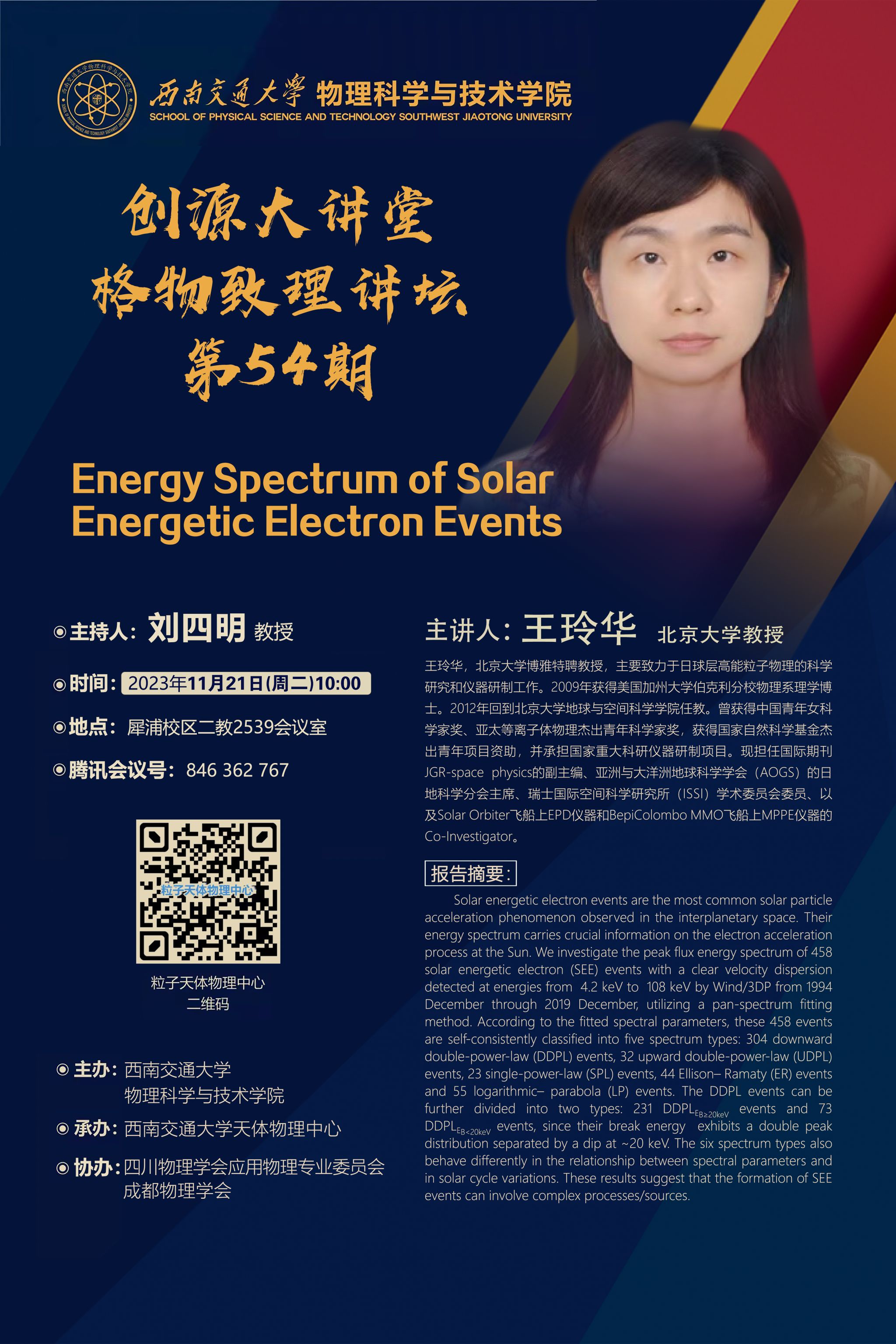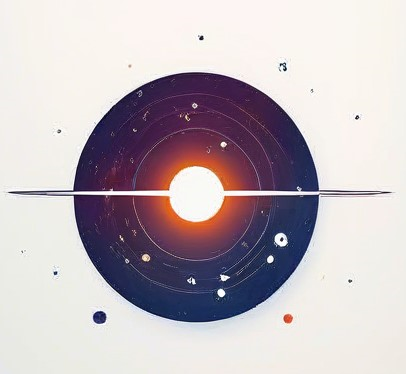主持人:刘四明 教授
时间:2023年11月21日(周二)上午10:00
地点:犀浦校区二教2539会议室
腾讯会议:846-362-767
题目:Energy Spectrum of Solar Energetic Electron Events
主讲人:王玲华 北京大学教授
王玲华,北京大学博雅特聘教授,主要致力于日球层高能粒子物理的科学研究和仪器研制工作。2009年获得美国加州大学伯克利分校物理系理学博士。2012年回到北京大学地球与空间科学学院任教。曾获得中国青年女科学家奖、亚太等离子体物理杰出青年科学家奖,获得国家自然科学基金杰出青年项目资助,并承担国家重大科研仪器研制项目。现担任国际期刊JGR-space physics的副主编、亚洲与大洋洲地球科学学会(AOGS)的日地科学分会主席、瑞士国际空间科学研究所(ISSI)学术委员会委员、以及Solar Orbiter飞船上EPD仪器和BepiColombo MMO飞船上MPPE仪器的Co-Investigator。
摘要:Solar energetic electron events are the most common solar particle acceleration phenomenon observed in the interplanetary space. Their energy spectrum carries crucial information on the electron acceleration process at the Sun. We investigate the peak flux energy spectrum of 458 solar energetic electron (SEE) events with a clear velocity dispersion detected at energies from≤ 4.2 keV to ≥108 keV by Wind/3DP from 1994 December through 2019 December, utilizing a pan-spectrum fitting method. According to the fitted spectral parameters, these 458 events are self-consistently classified into five spectrum types: 304 downward double-power-law (DDPL) events, 32 upward double-power-law (UDPL) events, 23 single-power-law (SPL) events, 44 Ellison– Ramaty (ER) events and 55 logarithmic– parabola (LP) events. The DDPL events can be further divided into two types: 231DDPLEB≥20keVevents and 73DDPLEB <20keV events, since their break energy EB exhibits a double peak distribution separated by a dip at ~20 keV. The six spectrum types also behave differently in the relationship between spectral parameters and in solar cycle variations. These results suggest that the formation of SEE events can involve complex processes/sources.




